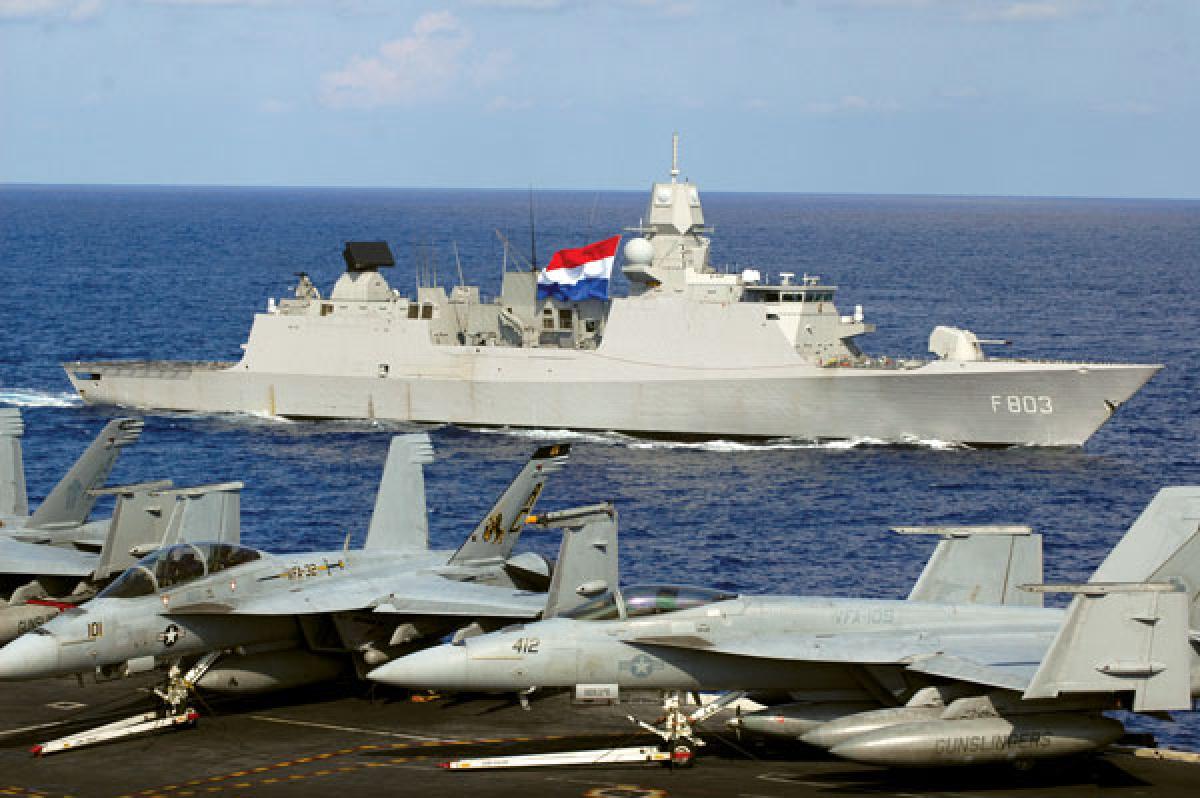The Dutch Ministry of Defense plans to upgrade its four De Zeven Provinciën–class guided-missile frigates so that they can play a larger role in NATO ballistic-missile defense. The modernization effort, announced in late 2011, includes significant improvements to the SMART-L early-warning radar carried on board the frigates, enabling them to detect and track ballistic missiles at extended ranges. The Netherlands does not plan to acquire the SM-3 surface-to-air interceptor missiles that could be used to engage ballistic missiles, but the tracking and detection data could be passed on to other sea- or land-defense assets, including the U.S. Navy’s BMD-capable warships, which could be used to engage a ballistic threat. The frigate upgrades are scheduled for completion by late 2017 on board all four sisters of the class: De Zeven Provinciën, De Ruyter, Evertsen, and Tromp, pictured here alongside the aircraft carrier USS Harry S. Truman (CVN-75).
On 17 November 2011 the keel of the U.S. Navy’s first Zumwalt-class destroyer was laid down. The event, which took place at the General Dynamics–Bath Iron Works shipyard in Bath, Maine, was a symbolic, if not actual, milestone for the new class of destroyers. The Zumwalt (DDG-1000), which has been under construction since February 2009, was already 60-percent complete when the ceremony took place, and is expected to join the Fleet around 2014. Sister ship Michael Monsoor (DDG-1001) began construction in 2010, and the third of the class has yet to be named. The Zumwalt-class destroyers, formerly known as the DD(X) program, are built for land attack and operations in the littoral regions of the world. The original plan was to purchase seven units, but that number has been reduced to three. Each vessel will displace 15,000 tons and be armed with Tomahawk land-attack cruise missiles and two 155-mm advanced gun systems that will permit naval surface-gunfire support to ranges in excess of 75 miles.
Senegal and Mozambique each will receive one retired Spanish Conejera-class patrol boat under a transfer deal announced in October. The new names for the ships, formerly known as the Conejera and Dragonera, have yet to be announced, but both ships were retired in 2010, along with their sisters Espalmador and Alcanada, pictured here. The four ships were ordered in 1978 and jointly funded by the Spanish Navy and the Ministry of Commerce for fisheries-patrol duties. Construction began on the boats in 1979 and they were delivered during the early 1980s, each serving around 30 years before retirement. The 32-meter patrol boat displaces 85 tons when fully loaded; while in Spanish service, each was armed with a 20-mm antiaircraft gun and a 12.7-mm machine gun. Upon recommissioning into the Senegal and Mozambique navies, the vessels are expected to conduct maritime-security and patrol duties.



